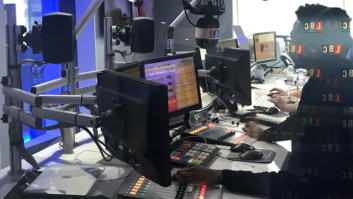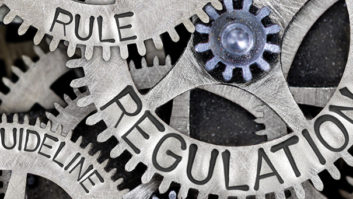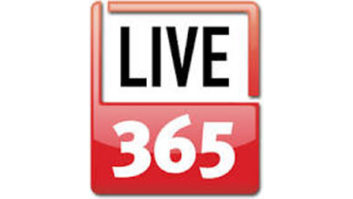A transmitter is among the largest capital items that most engineers will have to acquire. Making the right decision is important.
Radio World asked participants of a Radio Show session on AM/FM/Digital transmitters for tips to avoid common problems when making that big purchase. The panel is part of this year’s “Ask the Experts” engineering theme.
The right purchase decision involves looking beyond specifications and price, understanding the long-term goals of the station.
Tim Bealor, vice president of sales for Broadcast Electronics, said, “Making a smart buying decision involves understanding several issues. What is in store for the signal? Will it go HD? Is it to be sold? Will other portions of the processing chain be upgraded? Will significant investments be made in the station to grow it in the market?
“These and many other possibilities contribute to the ‘What do I buy?’ choice. If these questions are not asked, and answered, then the risk of buying something that may not fit the requirement significantly increases.”
Nevertheless, buyers still need to understand the technology itself. Session moderator Steve Davis, senior vice president of engineering and capital management for Clear Channel Radio, noted several ways to do this.
“Read the trade publications, attend seminars, ask questions and listen to other people’s questions. Company websites often have information and white papers. Social media such as Twitter is becoming an increasingly important vehicle for companies to communicate with customers.”
True cost
Gary Liebisch, eastern regional sales manager for Nautel, said, “Manufacturers’ offerings have changed a lot over the past decade, some for the better, some for worse. Buyers need to evaluate what’s currently out there and seek out testimonials from users of present-day models.”
The biggest concern for purchasers usually is cost, but the panelists caution that this requires a close examination and that users need to look down the road a bit.

This photo isn’t sideways! Working with tight spaces is among the challenges of many transmitter installations these days. WFMT(FM) in Chicago has mounted its dummy load by suspending it from a ceiling. Another trend is greater redundancy built into transmitters. WFMT, using a new Nautel NV40, operates without an aux for that reason.
“True cost goes beyond initial purchase price,” Liebisch said. “Customers want to know what the power consumption is, and what will be the cost of maintenance and repair costs once the warranty runs out. Often those costs can turn the appearance of slightly lower price upside down.”
Geoff Mendenhall, president of transmission research and technology at Harris Broadcast Communications Division, said engineers seriously need to consider their long-term involvement with HD. “Everyone can go to –14 dBc,” he said, referring to recent FCC approval of a digital power increase for most FM stations, “but spending the extra money to possibly go to –10 dBc in the future is a challenge to making the right transmitter purchase now.”
Hard economic times also influence the decision.
“Now more than ever, value is the big issue,” said Bealor. “Everyone wants a good reliable product that will give them long-term service, but at a value price. Options and glitz have taken a back seat in the current economic market.”

Multicasting and higher IBOC power are notable decisions facing transmitter buyers. CBS station WJFK(FM), serving Washington/Baltimore, made headlines when it began ‘quadracasting’ four HD Radio channels. It uses a Harris HPX system. Shown are Jeff Loughridge, Erich Steinnagel and Glynn Walden of CBS. Dave Hultsman, regional sales manager for Continental Electronics, said there should be a concern for HD readiness even if implementation is not in the near-term plans.
“In addition to sufficient headroom, it is important to allot enough capacity for AC power and air conditioning. You may see an increase of 100 percent in AC when HD goes online.”
Attend to the details
Transmitter technology has made great strides, and if you haven’t purchased a transmitter in the last 10 years, prepare to be surprised.
“All solid-state transmitters are now directly cost-competitive with tube technology up to 25 kW,” Mendenhall said. “At the same time the cost and size of transmitters has been reduced at all power levels.”
According to Liebisch, “In the last five to seven years, control systems have become available that provide drill-down capability and IP connectivity, enabling monitoring of virtually all parameters from anywhere. DSP technology and diagnostics eliminate the need to lug heavy test equipment to sites for routine checks. For contract engineers, this can mean the ability to cover more clients efficiently.”
Mendenhall cautions that buyers can get carried away with all of this remote capability.
“Many times engineers are not paying enough attention to the design efficiency and reliability of the RF power amplifier technology, but instead are distracted by the control system features.”
Is There an LDMOS in Your Future?
One of the limits to efficiency in solid-state FM transmitters is the VMOS (Vertical MOS) device that manufacturers use in the RF path. This VMOS design is 15 years old and obsolete in many ways. The transition to HD is driving newer technologies to market.
LDMOS (Laterally Diffused MOS) devices are revolutionizing the design of RF amplifiers in the HF through UHF range. Advantages of LDMOS devices include higher power in the same size package as conventional VMOS with lower thermal losses. They were first used in the early 1990s in the high-power cellular market, and the technology quickly spread to the industrial, scientific and medical (ISM), broadcast and aerospace markets, largely displacing silicon bipolar devices. Virtually all UHF TV transmitters now use LDMOS devices in their final amplifier stages.
The MRF6VP11KH LDMOS from Freescale Semiconductor delivers 1 kW of power in the FM broadcast band. Initial devices worked with 28 to 32 volts, while later 50 volt semiconductors offer compatibility with commercial 48 volt power supplies. 50-volt devices from one manufacturer cover power levels from 10 watts to 1 kW over the 1.8 to 600 MHz range. In the FM band a single LDMOS has over 800 watts power, a gain greater than 24 dB and drain efficiency greater than 80 percent. A ruggedized LDMOS variant can withstand a VSWR of 65:1, although it is currently only available at the 300-watt level.
The bottom line for transmitter buyers is that this greater efficiency permits the design of transmitters with fewer RF power devices and amplifier stages. LDMOS-based transmitters promise simpler circuitry, smaller footprint, lower annual energy consumption and increased reliability.
While most manufacturers are experimenting with LDMOS designs, all remain tight-lipped on specifics of new product releases, although there are hints of news by next April.
— Tom Vernon When planning an installation, attention to details and documentation is critical.
“Make sure the selected transmitter meets all environmental conditions of the site,” Mendenhall continued.
“Pay particular attention to building/transmitter cooling requirements, AC power stability/distribution and antenna performance. Make sure to lay out and label all wiring to make it easy to service now and in the future with changes in personnel.”
Hultsman noted that it may also be important to consider additional AC surge protection on the load side.
“Lightning strikes to a tower are easily coupled into the AC feeds for deicers or tower lights, so it is important to install surge protectors to isolate your AC from this point of ingress.”
Get grounded
Bealor makes a plea for good grounding.
“Older transmitters with large AC transformers were much less sensitive to AC fluctuations and lightning. Newer high-performance solid-state units can be just as reliable, but the installation must be grounded and isolated properly.”
Preventive maintenance has been reduced somewhat with solid-state devices, but it remains an essential element of transmitter reliability. All panelists would like their customers to take preventive maintenance more seriously, especially cleanliness.
“Cleaning, air flow and cooling are still important,” said Liebisch. “The life of semiconductors and fans is greatly extended when the environment is tightly controlled. A surprising number of sites operate with an exhaust fan only, creating a negative pressure situation that starves a transmitter for air.”
Hultsman adds, “Dust collecting on high-voltage components in tube transmitters can lead to arcing, while dirt buildup on heat sinks can increase semiconductor junction temperatures dramatically and cause premature failures.”
“Clean the air filters and interior of the transmitter monthly,” Mendenhall urged.
Everyone has horror stories of the worst transmitter installation ever. Hultsman relates a tale of a common mistake that can have disastrous consequences.
“All of the openings in a new transmitter building were sealed up with a spray insulating foam. The problem is that it was a totally closed system. Sulfides were outgassed from the foam, had no place to go, and they totally ate up the silver plating and copper on the PC boards, virtually ruining the transmitter.”
The session “Ask the Experts: AM/FM/Digital Transmitter Manufacturers” will be held at the Radio Show on Thursday Sept. 30 at 1:30 p.m.













